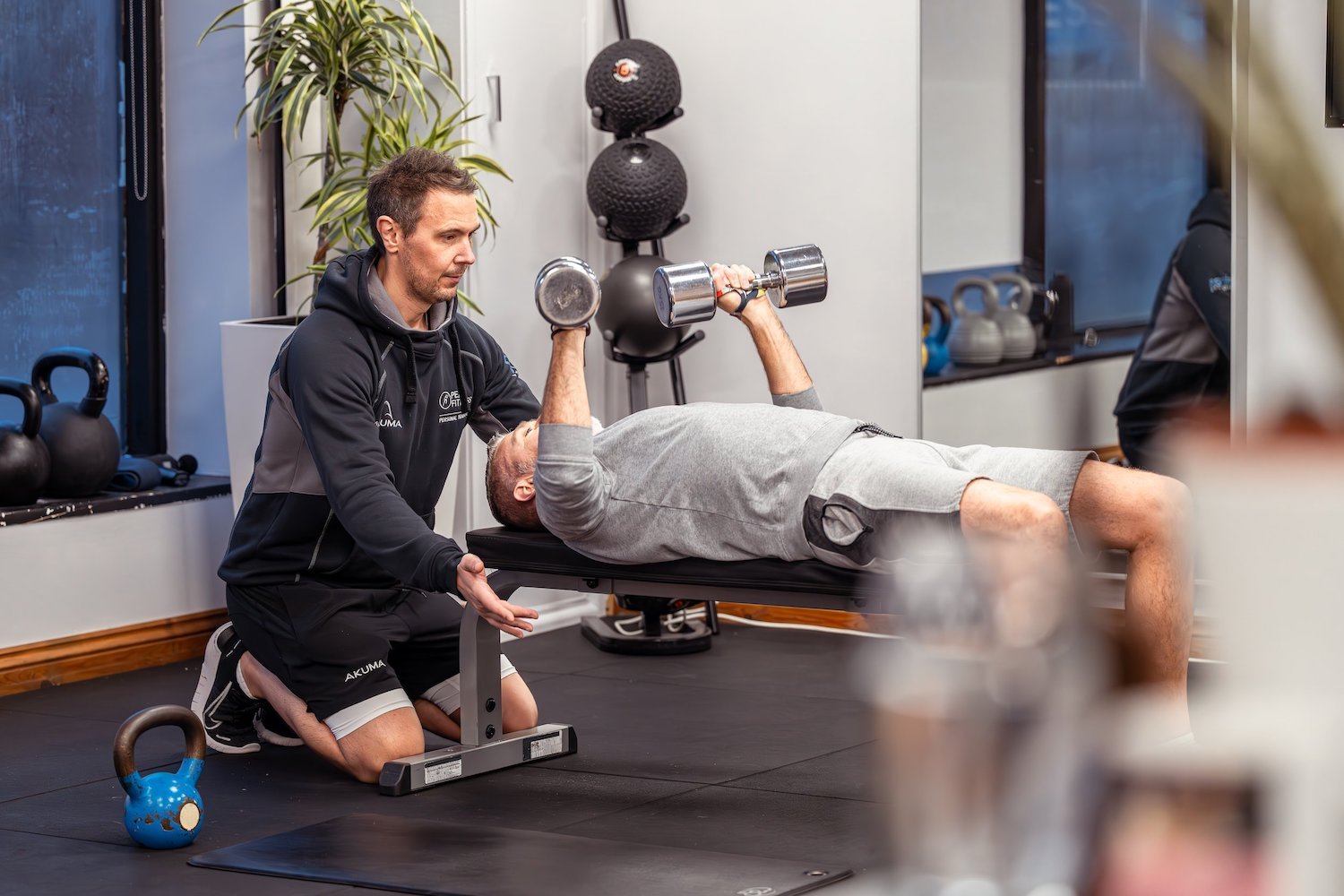What Is Peak Performance Training and Why It Matters
Peak performance training is a strategic approach to optimizing mental, emotional, and physical capabilities so individuals can consistently operate at their highest potential. Whether you’re a professional athlete, high-level executive, student, or creative entrepreneur, this training helps elevate performance beyond average or baseline expectations. It’s not about short bursts of productivity or occasional flow states—it’s about creating a system for sustainable excellence. This type of training integrates mindset mastery, physical conditioning, emotional intelligence, and habit engineering to create powerful, long-lasting results. The goal is not just to achieve more, but to do so with clarity, resilience, and energy. As competitive pressures rise in nearly every domain, peak performance training offers a distinct advantage. It’s a system that prioritizes alignment, consistency, and intentional living, all of which contribute to a higher quality of work and life.
The Science Behind Peak Performance
Peak performance training is deeply grounded in neuroscience, physiology, and behavioral psychology. At its core is the idea of “flow,” a mental state where focus, productivity, and satisfaction peak simultaneously. Flow states activate key neural pathways, increasing dopamine and norepinephrine, which enhance attention, learning, and motivation. Additionally, training the brain through neuroplasticity—its ability to rewire itself—supports long-term behavioral and performance improvements. Biofeedback tools, such as heart rate variability (HRV) monitors, help individuals become more aware of their physical states, enabling them to manage stress and energy levels more effectively. On the physical side, understanding how the body responds to sleep, nutrition, and movement allows people to build energy-efficient systems for performance. The interaction between mind and body is not just symbolic—it’s essential. When mental and physical systems operate in sync, performance outcomes dramatically improve.
Core Pillars of Effective Peak Performance Training
Successful peak performance training revolves around several interconnected pillars. Mental conditioning includes techniques such as visualization, focus exercises, and mindset shifts to help individuals maintain clarity and purpose under pressure. Physical optimization emphasizes the importance of quality sleep, strategic nutrition, movement, and recovery routines. Emotional regulation is just as vital—it involves managing stress, fostering emotional intelligence, and building resilience to setbacks. Another critical component is goal engineering. This includes not just setting goals, but aligning them with values and designing a path that includes feedback loops and performance metrics. These elements, when combined, create a robust structure that supports sustained high-level performance. Neglecting any one pillar—whether sleep, mindset, or emotional stability—can destabilize the entire system. By training across all dimensions, peak performers build internal and external strength that enables long-term success.
Building a Personalized Peak Performance Routine
No two individuals are the same, which is why a one-size-fits-all approach rarely works in peak performance training. Personalization begins with establishing baseline metrics, such as sleep quality, resting heart rate, productivity cycles, and mental focus scores. These indicators offer valuable insight into where improvements are most needed. From there, a customized routine is built around daily rituals and rhythms. Morning routines that involve breathwork, cold exposure, and journaling can prime the brain for optimal focus, while nighttime routines ensure deep recovery. Tools like wearable fitness trackers, habit trackers, and productivity apps allow for regular monitoring and adjustment. The key is consistency and adaptability—recognizing when routines are working and when they need refinement. Ultimately, the routine should not feel like a chore but a supportive structure that enhances performance while preserving well-being.
The Role of Coaches and Trainers in Peak Performance
While self-directed training can be powerful, coaches play a unique and transformative role in helping individuals reach peak performance. A peak performance coach brings a blend of psychological insight, performance science, and accountability. Unlike traditional coaching, this approach is highly data-driven and personalized. Coaches help identify blind spots, remove internal obstacles, and build confidence through progressive challenges. They use tools like cognitive assessments, biometric feedback, and habit stacking strategies to help clients maximize output. For those interested in becoming certified peak performance trainers, numerous reputable programs offer training in flow psychology, habit science, and coaching methodologies. Whether you’re seeking guidance or considering coaching others, the role of a trainer is to elevate, not push. It’s about co-creating a plan that inspires consistent action and measurable growth.
Common Obstacles to Peak Performance—and How to Overcome Them
Every high performer eventually encounters resistance, and peak performance training is designed to address these blocks. Mental hurdles such as imposter syndrome, fear of failure, or perfectionism can quietly undermine progress. Physically, overtraining, poor sleep, and neglecting recovery routines often lead to burnout and plateaus. Lifestyle distractions like digital overload, poor diet, or lack of environmental control can also chip away at momentum. Overcoming these challenges starts with awareness—tracking patterns and identifying root causes. Techniques such as reframing limiting beliefs, micro-goal setting, and digital detoxes can be extremely effective. Biohacks like cold showers or breathwork may sound simple, but they serve as anchors in the daily fight for clarity and discipline. By proactively addressing these blocks, individuals can regain traction and move forward with greater precision and confidence.
Top Peak Performance Techniques Used by High Achievers
Elite performers consistently rely on a set of practical tools to stay sharp and energized. Breathwork techniques such as box breathing or the Wim Hof method improve oxygen efficiency and reduce stress. Cold exposure and heat therapy activate the nervous system and promote recovery. Time-blocking strategies like the Pomodoro technique help protect deep focus periods, while eliminating distractions enhances mental clarity. Journaling—especially performance journaling—reinforces learning, tracks emotional cycles, and helps process wins and setbacks. Habit stacking involves pairing new behaviors with existing habits to make change easier and more automatic. These techniques are simple but powerful when done consistently. The magic isn’t in doing everything at once—it’s in choosing the right methods, applying them consistently, and refining based on results.
Integrating Peak Performance Principles into Everyday Life
What makes peak performance training truly powerful is its ability to transform not just work, but life as a whole. These principles apply to parenting, fitness, relationships, and self-expression. For example, using visualization and goal-setting in personal life can lead to stronger emotional bonds and deeper satisfaction. Performance-enhancing habits like digital minimalism and structured daily planning free up mental space for creativity and presence. When flow becomes a regular part of life, even ordinary tasks take on a new level of ease and meaning. The key is integration—not compartmentalizing peak performance into work hours only, but allowing it to elevate your entire lifestyle. This type of transformation creates alignment, where your goals, behaviors, and values support each other seamlessly. It’s not just about doing more—it’s about living better.
Peak Performance Training for Specific Populations
While the core framework of peak performance training is universal, it must be tailored to different audiences for maximum impact. Athletes may focus more on physical optimization and recovery, while entrepreneurs need sharper mental clarity and resilience under pressure. Students can benefit from cognitive strategies like memory retention, spaced repetition, and study planning. Creative professionals often thrive on flow-state techniques and emotional self-regulation to maintain inspiration. Even corporate teams use peak performance training to boost collaboration, innovation, and energy management. Customizing programs based on lifestyle, age, profession, and stress levels ensures that each person receives a plan that truly fits. No matter your field, peak performance training provides tools that empower you to operate at your highest level—mentally, emotionally, and physically.
Frequently Asked Questions (FAQ)
What are the core components of peak performance training?
Peak performance training blends mental conditioning, physical optimization, emotional regulation, and strategic goal-setting to help individuals perform at their best.
Is peak performance training only for athletes?
No, it’s highly effective for entrepreneurs, students, executives, and creatives who want to operate at a high level with consistency and balance.
Can I start peak performance training on my own?
Yes, many start with self-guided routines, but working with a coach can accelerate growth and improve results through accountability and personalization.
How long before I see results?
Depending on your current habits and goals, most people see noticeable changes within 4–12 weeks of consistent training and tracking.
What tools are useful for peak performance training?
Popular tools include HRV monitors, breathwork apps, productivity planners, habit trackers, and wearable fitness devices for monitoring sleep and energy.

